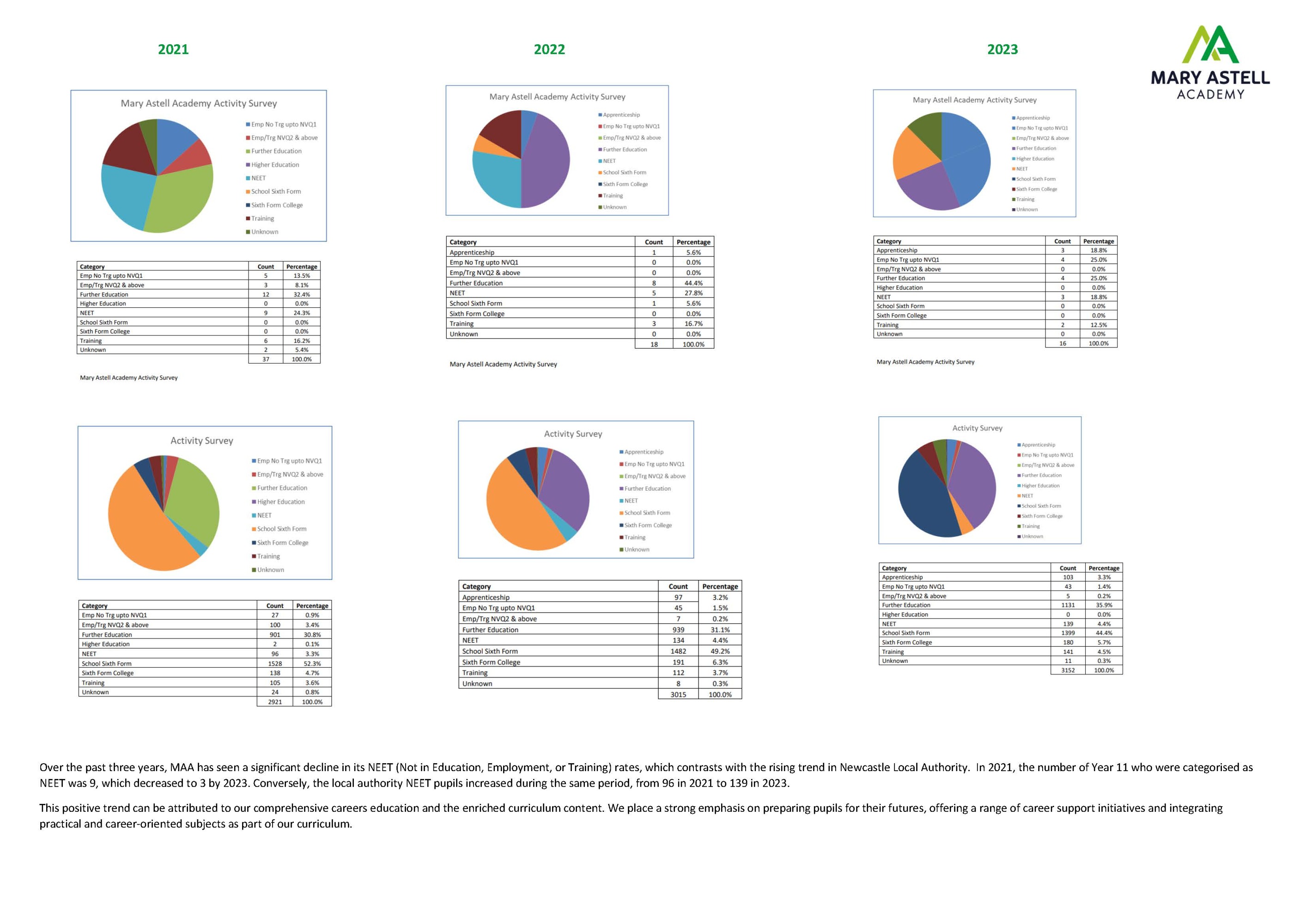- Home
- Curriculum
- Curriculum Impact
Curriculum Impact
Our academy recognises there are multiple ways to measure pupil progress. These range from the academic, in which the success of the curriculum is measured primarily (but by no means exclusively) through pupils’ performance across a spectrum of measures.
Our pupil progress can be measured against both data from commissioning schools and internal baseline assessments. For our short term pupils, this data is shared with their post - Mary Astell Academy destination to inform their future provider, and to support successful transition. For longer stay pupils, progress can be further quantified by comparison against internal termly assessments carried out by the departments.
We continually measure the success of our curriculum throughout Years 7 – 11. How well our pupils are learning the content outlined in the curriculum is measured using a variety of formative and summative assessments. These assessments are carefully designed in order to measure progress and shape future learning. Moderation across teachers in a department is a matter of routine.
Results at both KS3 and KS4 are analysed in detail to ensure parity across and within subjects and cohorts. With this high level of scrutiny, areas for development in our curriculum are identified and are included in the school improvement plan.
We are all committed to the belief that it is important to acknowledge other ways to measure the impact of our curriculum. Whilst some of these qualities are not always easily captured in a spreadsheet, we seek to measure pupil enjoyment and engagement through attendance, participation and attitude to learning.
Mary Astell frequently seeks the views and opinions of our pupils, parents, professional partners and commissioning schools (feedback provides crucial information by which we measure curriculum impact).
Through these variety of sources, we continually evaluate and judge the effectiveness and success of our endeavours and make the necessary adjustments so that pupils are “prepared for success in a changing world”.
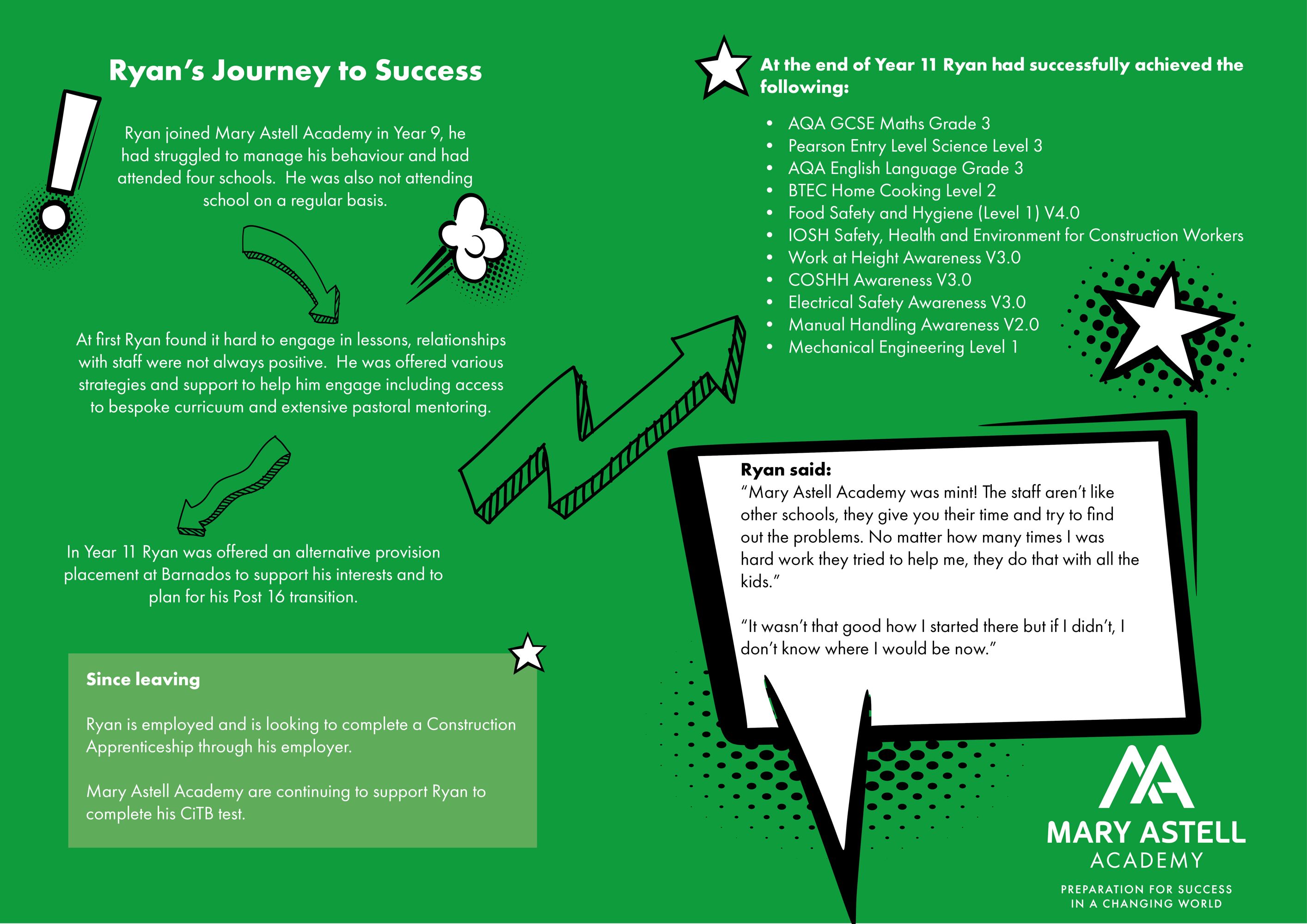
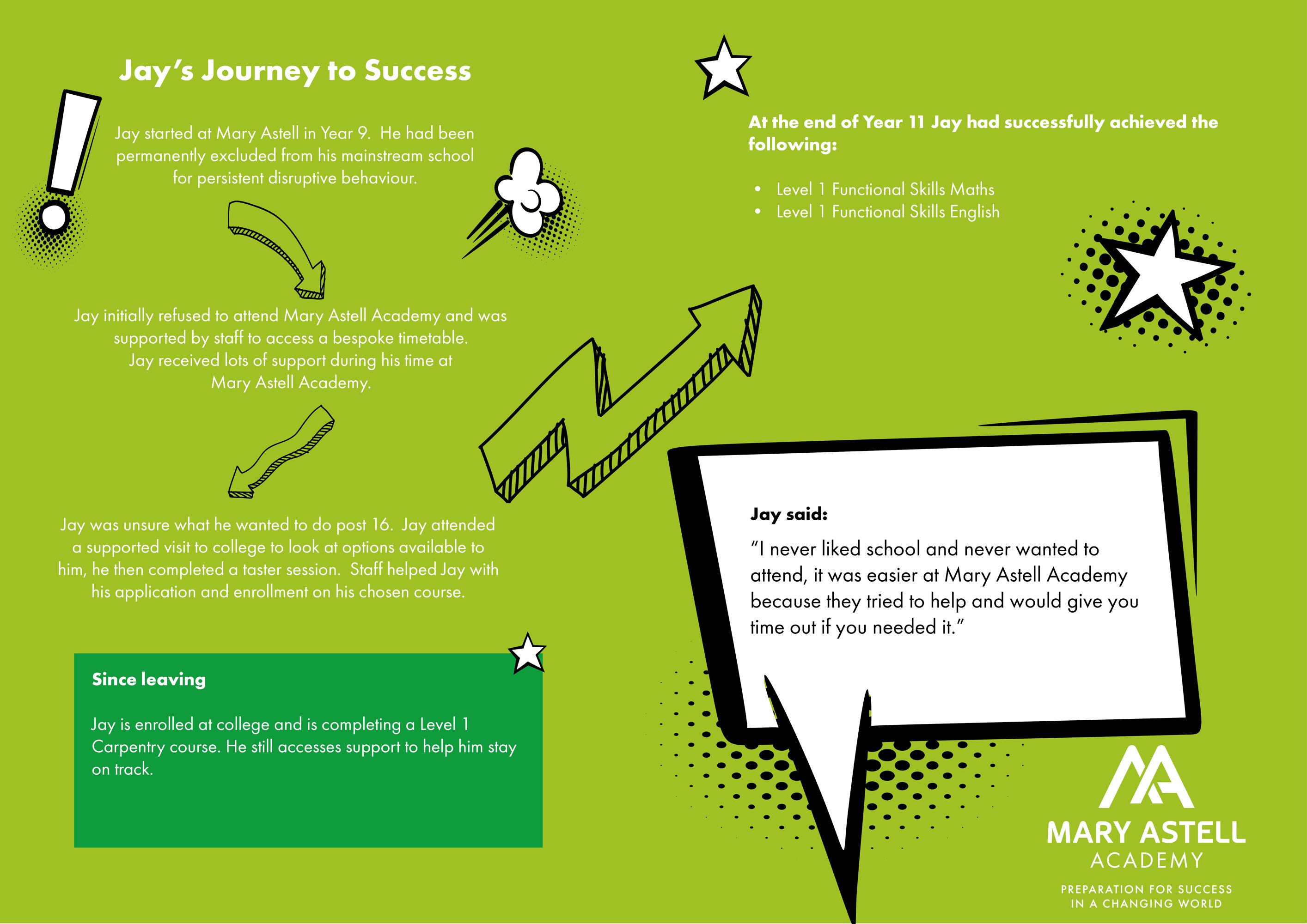
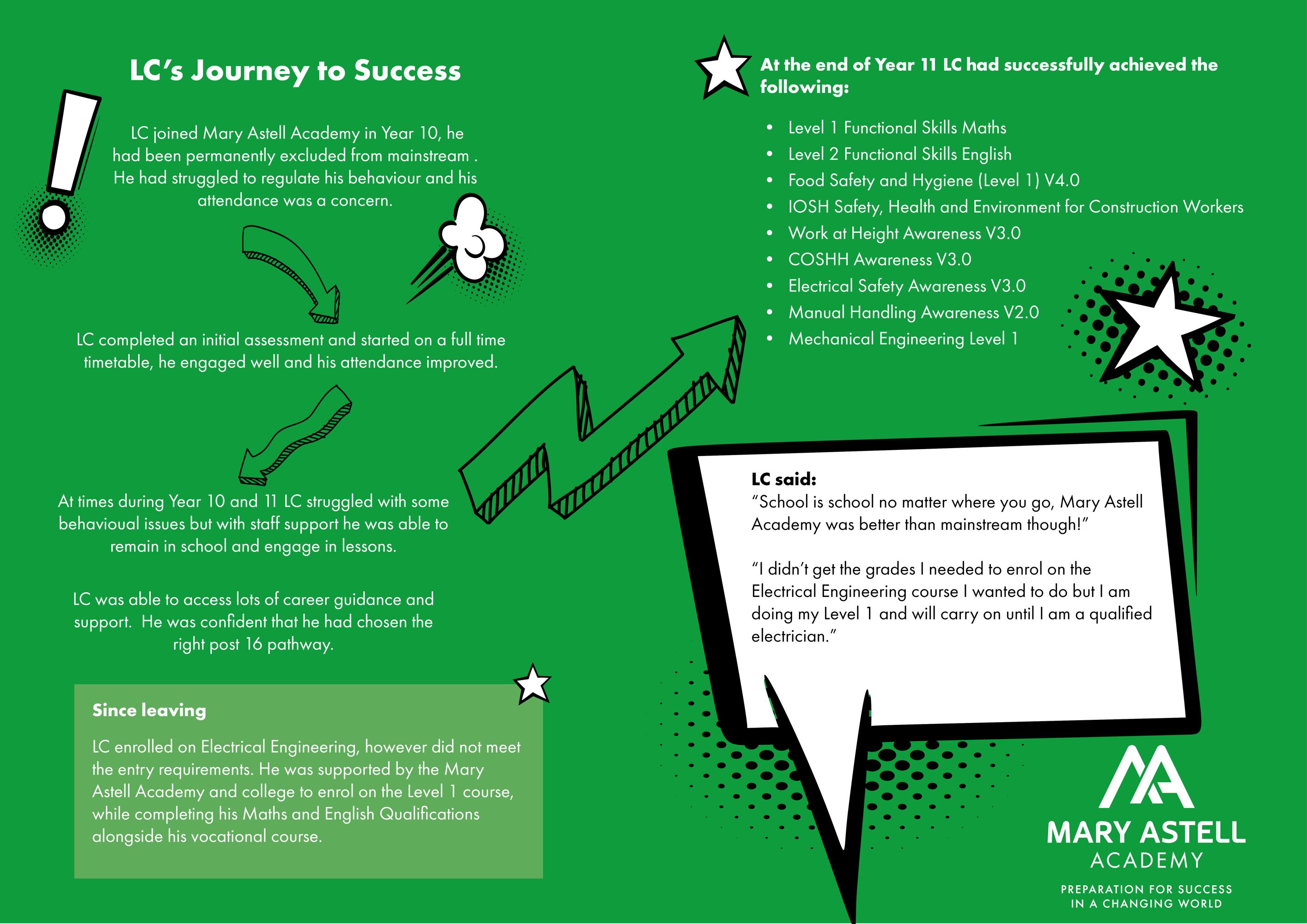
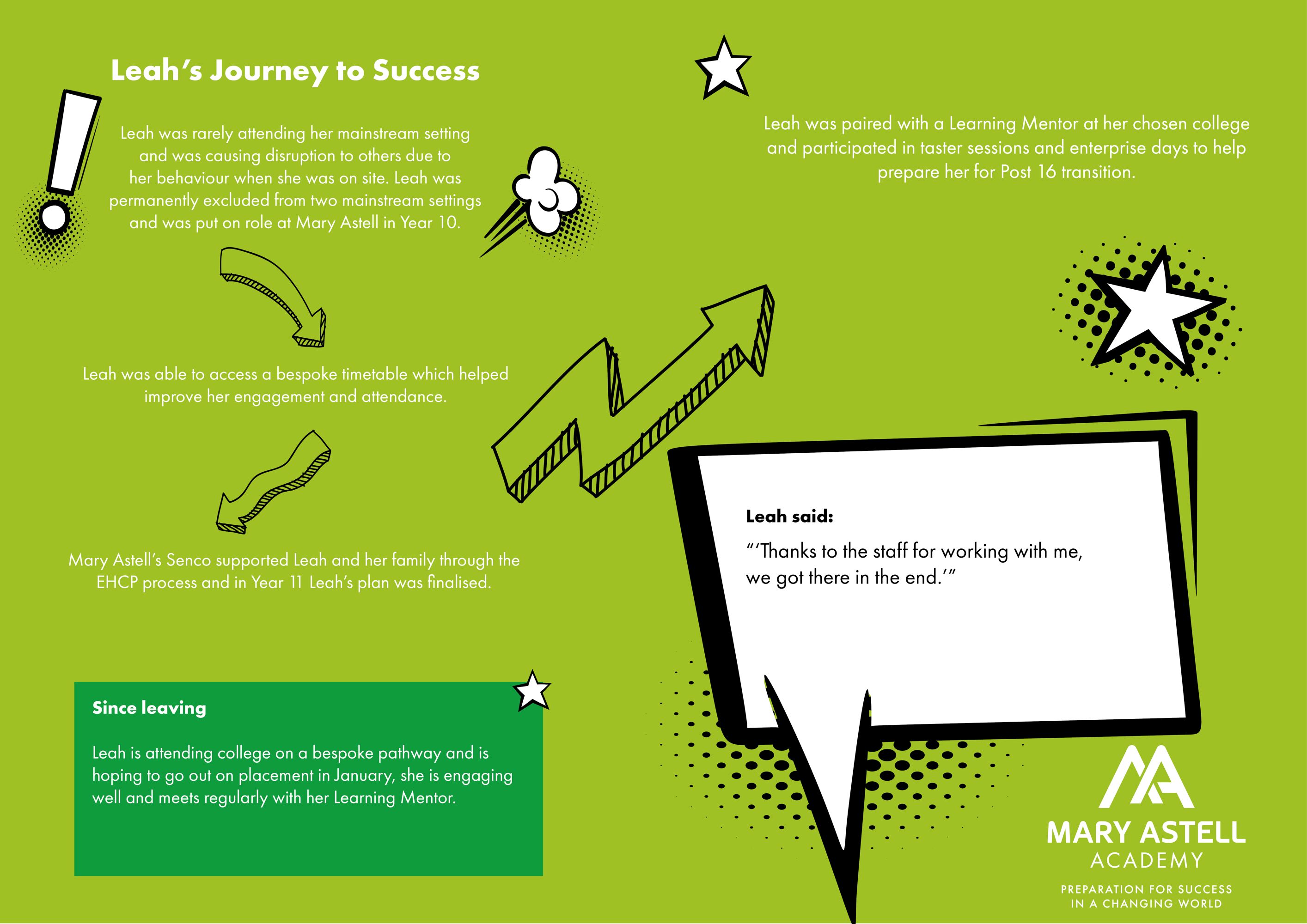
Documents
| Page Downloads |
|---|
| NEET Three Year Trend Curriculum Impact Page |

